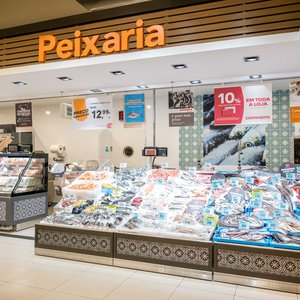Improving sustainability of European fish aquaculture by control of malformations
FineFish is a collaborative research project involving 19 partners aimed at generating new practical knowledge on how to reduce the incidence of malformations in the major fish species used in European aquaculture production and to apply this to the commercial sector. The project receives financial support from the European Commission, under the 6th Framework Programme.
Based on the project's two years of research, Finefish is now able to makes a number of recommendations to reduce malformations in four of the major species farmed in Europe: Seabass, Seabream, Rainbow Trout and Cod. These recommendations as well as the background research are described in the latest Finefish Newsletter and include:
Effects of water current on the developments of lordosis in Cod
Swimming speed during the early feeding period of Atlantic cod must be controlled by the use of a low water current flow in the rearing tanks. Until more detailed knowledge about the swimming capacity of young cod is available, the water speed should be reduced as much as possible. For commercial purposes, the water speed must be high enough to maintain the self-cleaning properties of the rearing tanks.
Optimal level of vitamin A to sea bass
Data from gene expression studies strongly suggest that vitamin A may regulate the ossification/mineralization processes and probably influence the patterning of different cell types: a down regulation of mineralization process was observed between extreme groups as RT 35 and RT 5. Moreover, these results also suggested that vitamin A requirements change through the development stage of seabass larvae, which would imply a change in the dietary vitamin A level during larval development so as to minimise the appearance of deformities.
Test of today’s recommended/best vitamin mix in dry feed to sea bass
Results showed that low levels of dietary vitamins disrupted a temporal sequence of co-ordinated growth factor expression, involving different genes controlling the differentiation of osteoblasts; part of the osteoblast is then converted into adipocytes and this led to the appearance of deformities. The standard vitamin mix level induced a significant percentage of head and column deformities showing the need to further refine the proportions of certain vitamins (particularly those known to be involved in bone and collagen synthesis, i.e. Vitamin A, D and C). The recommendation is to avoid the incorporation of high HUFA levels in larvae diets (i.e. > 2g EPA+DHA/100g DW) during early stages to prevent the conversion of osteoblasts into adipocytes.
Safe temperature limits for early development in sea bream
Water temperature is a key factor for both the biological performance and the development of skeletal malformations in sea bream larvae. Up to this phase, our results suggest that the avoidance of 16°C during the hatchery phase could significantly increase the performance and quality of sea bream juveniles.
improving-sustainability-of-european-fish-aquaculture-by-control-of-malformations







